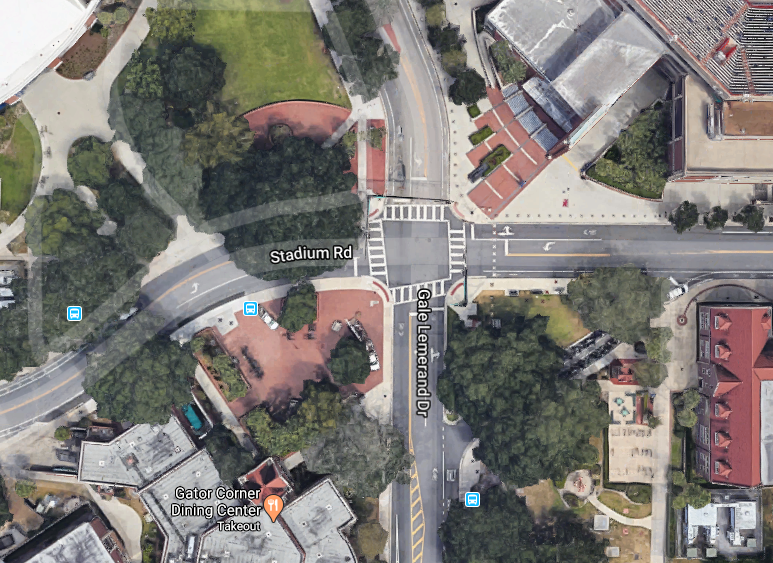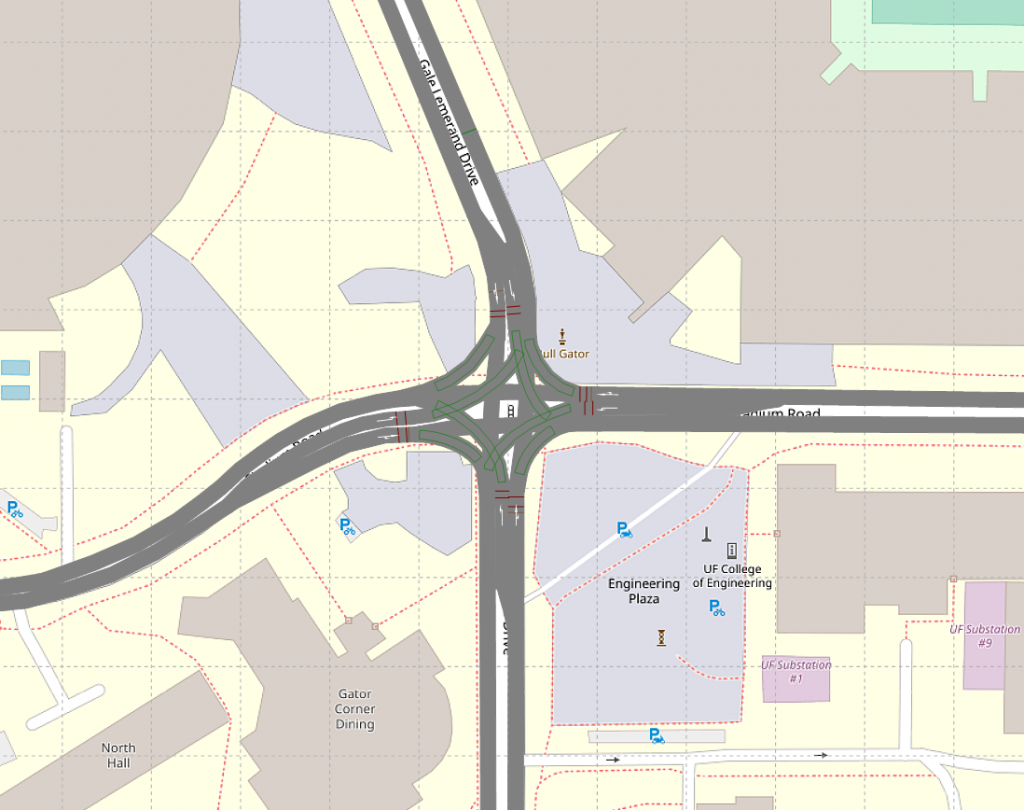
Researchers at UFTI leading a STRIDE Center project in collaboration with the Georgia Institute of Technology (GaTech) have developed a robust microsimulation extension. This will allow for the development and refinement of advanced transportation management strategies and evaluation procedures for the presence of connected and autonomous vehicles (CAVs). Simply put, the researchers have developed simulation extensions to test “what if” scenarios related to CAVs.
“Our main objective is not to develop an AV or CV model or ‘what if’ scenarios, it is to develop a platform or a framework so that these scenarios can be tested,” said Dr. Pruthvi Manjunatha, Research Assistant Professor at the UFTI. “Our work is building a tool to test and design for the new reality of having AV/CVs alongside conventional vehicles on the road.”
The STRIDE-funded research titled “Evaluation of Advanced Vehicle and Communication Technologies through Traffic Microsimulation (Project D),” considers both mobility and environmental impacts. The goals of the project are accomplished using the VISSIM microsimulator to replicate and evaluate these strategies. The UF research focused on traffic simulation while the GaTech team focused on emissions. This article focuses on the work at UF.
At UF, Dr. Manjunatha oversaw the work of Xi Duan, a master’s student who graduated in Spring 2020. Duan was responsible for running the traffic simulation portion of the study. With guidance from Dr. Manjunatha, he developed CAV functionality in VISSIM using external interfaces such as COM Application Interface Programming (API) and External Driver Model (EDM). He tested this extension by implementing an existing AV model (Talebpour and Mahamassani, 2016) and CV model (PTV, 2016), and simulating various penetration levels of CAVs.
“The scalability is an important consideration for this project, we want to develop a vehicle longitudinal control framework that could be easily applied to different AV/ CV logic,” Duan said. “Therefore, we make use of the advantages of both COM API and external driver model.”

The results are showing a net improvement in traffic operational measures. As for the GaTech work, emissions did not follow the same trend. Dr. Pruthvi Manjunatha said that more work needs to be done to check if additional feedback to the model is required. As a consequence of this collaborative work, the framework the research team created is a simulation extension with CAV functionality, which includes integrated emissions modeling. Practitioners can use this framework to evaluate transportation management strategies using emerging technologies.
Recently, a webinar directly related to this topic was hosted by the STRIDE Center. The STRIDE Center is the USDOT’s 2016 Regional (Southeastern) University Transportation Center (UTC) housed at the UFTI. The webinar was recorded and can be viewed on YouTube at https://www.youtube.com/watch?v=IjwXrN0mQFg&feature=youtu.be.
More STRIDE-related webinars can be found here.
The University of Florida Research Team: Dr. Pruthvi Manjunatha, Dr. Lily Elefteriadou, Xi Duan, M.S. (Spring 2020), and Xiaohan Wang, Ph.D. candidate; The Georgia Institute of Technology Research Team: Dr. Mike Hunter, Dr. Chelsea “Chip” White, Dr. Deborah Postma, Dr. Angshuman Guin, and Somdut Roy, M.S. student.